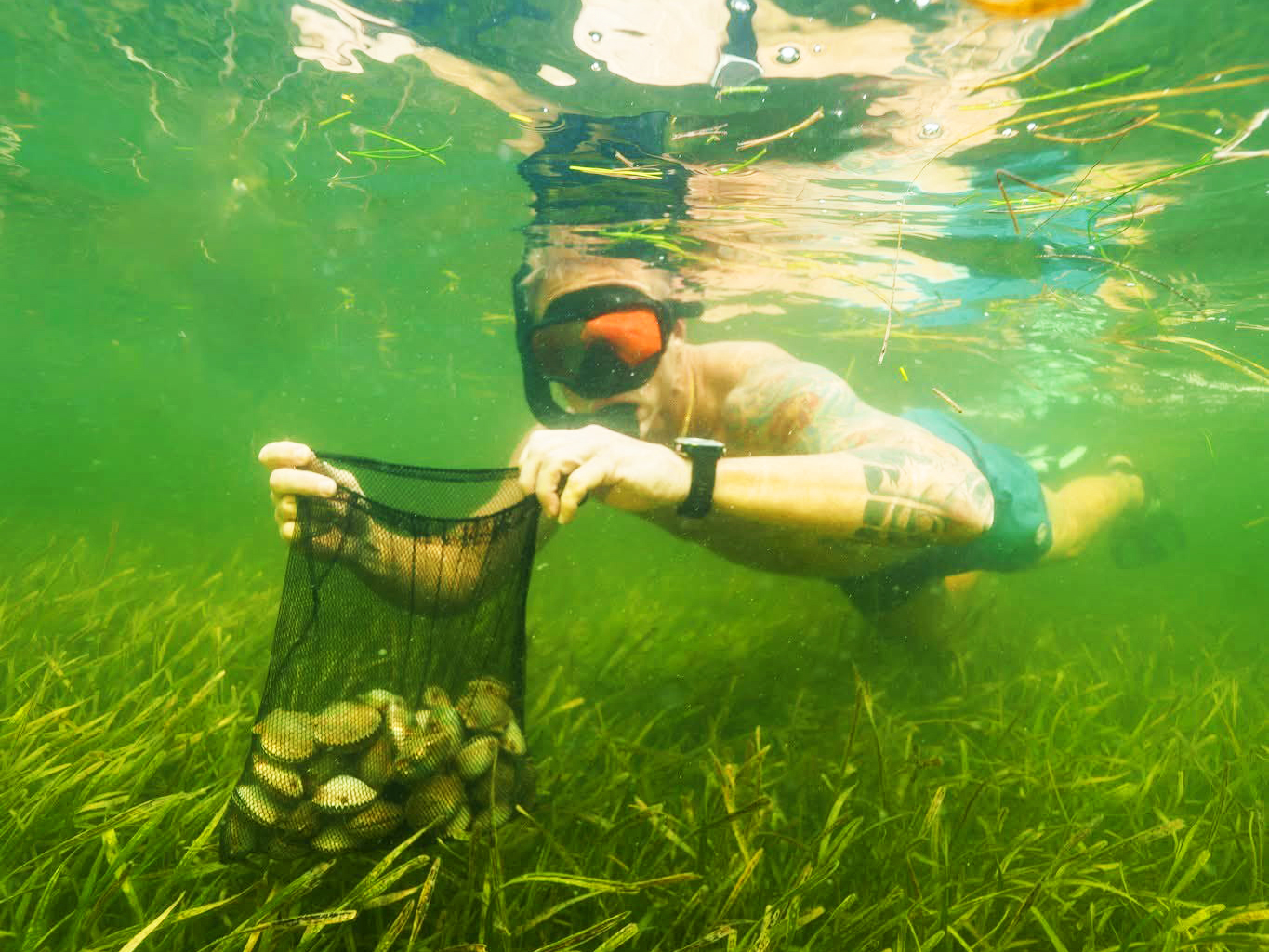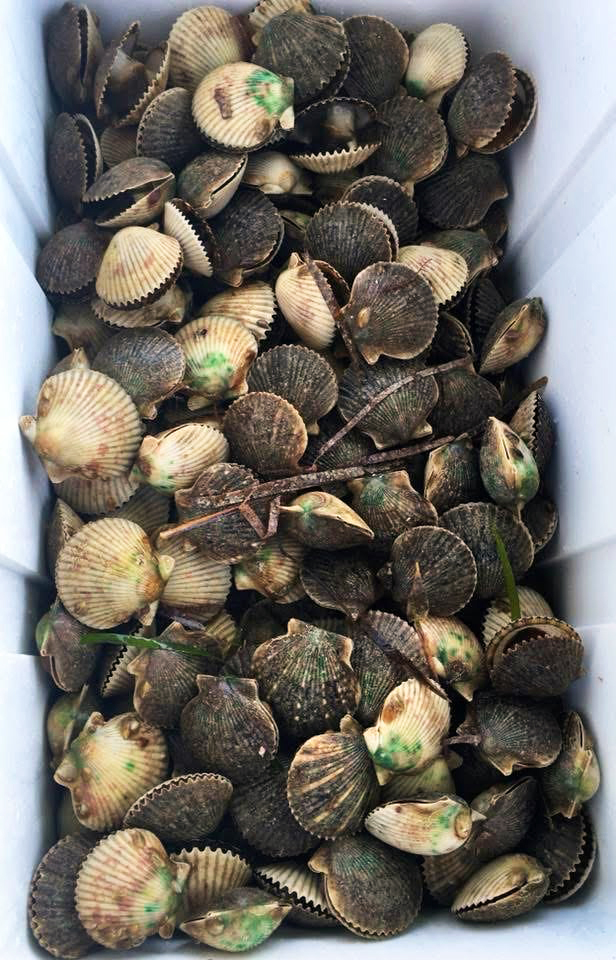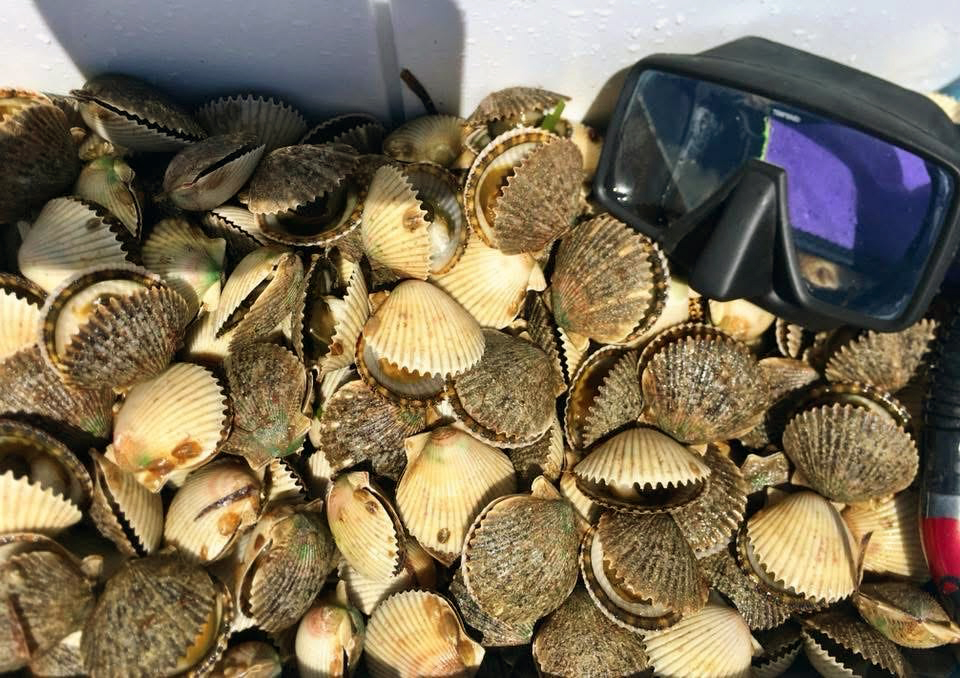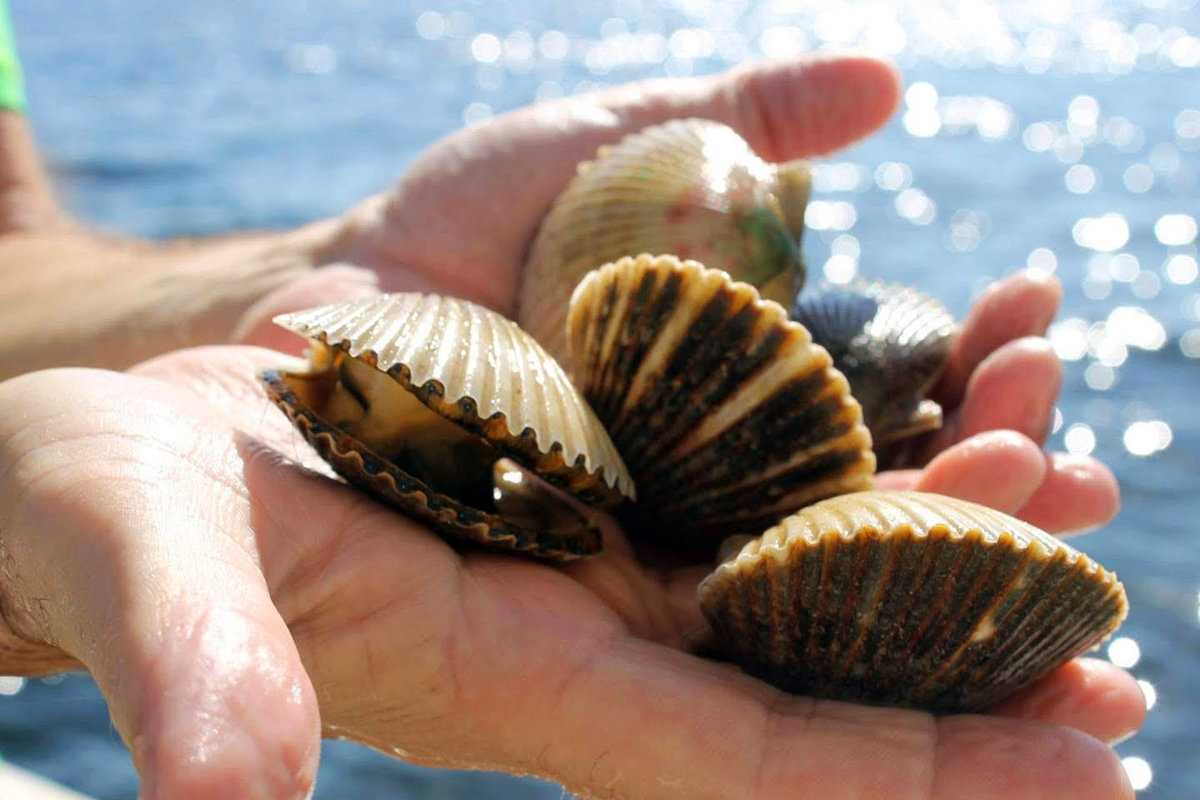Scalloping is one of those Florida summer traditions that’s hard to explain until you try it. It’s not quite fishing, not quite snorkeling—somewhere in between a treasure hunt and a lazy float over bright green grass beds. And for a few months each year, it turns quiet parts of the Big Bend into full-blown scallop country.
If you’ve been thinking about heading out this season, or it’s your first time trying to dive for scallops, this guide covers everything you need to know: the gear, the zones, the best water conditions, and what to expect once you’re out there.Y ou’ll get a handle on the rules and licensing, learn how to spot the right grass beds, and pick up tips that make the difference between coming back with a limit or wondering where all the scallops went. We’ll also look at the different ways to get on the water—whether that means running your own boat, tagging along with friends, or booking a spot with Florida scallop charters and guides who know every bend, tide, and patch of bottom worth checking.
The 2025 Season Ends September 1, 2025! Start planning now, and make sure you check the 2025 Scallop Season Dates for North Florida to lock in the right week. The best scallopers are the ones who know how, where, and when to get it done.
Table of Contents
ToggleWhat “Scalloping” Is—and Why the Big Bend Is the Place to Do It

Scalloping in Florida means diving for bay scallops—small, sweet shellfish found in shallow grassy flats along the Gulf Coast. You don’t need scuba gear, just a mask, snorkel, fins, and the ability to float face-down and spot them on the bottom.
You’ll find them in only a few select places in Florida, and the Big Bend region (otherwise known as the area around Taylor, Jefferson, Dixie, and Franklin Counties) is one of the most popular. The flats here are especially productive, the water is navigable by small boats, and the grass beds stretch for miles.
Compared to spots like Crystal River or Homosassa, the Econfina-area systems are quieter and less pressured. That means better visibility, fewer boats competing for the same beds, and a more laid-back experience overall.
What You Need Before You Go
Before you load up the cooler and gas up the boat, make sure you’re legal and prepared. Here’s the gear you’ll need to scallop safely and legally in Florida:
Required
- Florida Saltwater Fishing License
Unless you’re on a charter or under the age exemption, you’ll need one. - Mask, Snorkel, and Fins
You’ll be swimming over 3–7 feet of water and need to move efficiently. - Mesh Bag or Catch Bag
Scallops go right into your bag once you collect them—no hard coolers in the water. - Dive Flag (if snorkeling from a boat)
This is required by law. It alerts nearby boaters that there are swimmers in the water.
Optional But Helpful
- Gloves (for handling rough shells or barnacles)
- Scallop scooper or small dip net (some prefer using these rather than reaching)
- Rashguard or dive shirt (prevents sunburn and chafing)
- Floating mesh basket (lets you tow your bag instead of carrying it)
- Boat anchor with grass-friendly setup (to avoid tearing seagrass beds)
If you’re going out without a guide, don’t forget the other basics: a GPS, tide chart, sunscreen, water, snacks, and a cooler with ice for storing your catch once back aboard.
Where to Launch & What to Expect on the Water
The most productive scalloping grounds near Econfina are only accessible by boat. These aren’t roadside pull-off zones. You’ll launch from inland ramps (like those along the Econfina River) and head toward Apalachee Bay or the flats east toward Steinhatchee.
Here’s what makes this area special:
- Longer access window (compared to areas farther south)
- Healthy, consistent grass coverage
- Lower boat traffic than commercial-heavy destinations
Some common launch areas include:
- Econfina River Boat Ramp
- Keaton Beach (further west, but often used for scalloping runs)
- Steinhatchee Marina (for eastern access)
Most beds sit in 3–6 feet of water, depending on tides. Early in the season, you’ll find scallops in shallower zones—easier to access and great for beginners. Later in the season, they move deeper as pressure and water temperature rise.
Knowing where to go isn’t just about GPS coordinates—it’s about bottom type. Scallops don’t hang out in mud or silt. You want to find firm bottom, bright green grass, and clean edges near channels or sand pockets.
How to Spot and Collect Scallops Underwater

Once you’re over the grass flats, it’s game on. Scalloping is about two things: spotting the shells, and getting to them before they dart off. Yes—they swim.
Here’s how to get it right.
🐚 What to Look For
At first, they’re hard to see. They blend in with the seagrass, and you’ll swim past a dozen before you notice the first one. But once you do, your eyes adjust. Look for:
- A fan-shaped shell, about 2–3 inches wide
- Distinct rows of tiny blue eyes peeking out along the edge
- Slight motion—scallops will often open and close slightly if disturbed
They may be sitting in the open or tucked slightly under grass blades. On bright days, their outline catches the sunlight. On overcast or murky days, they’re tougher to spot, so go slow and scan methodically.
✋ Hand or Scoop?
Most people grab scallops by hand. Just pinch the shell closed and pop it into your mesh bag. You can also use a scallop scoop, or even a small aquarium net.
You’ll often see 3–4 more nearby when you find one. Circle slowly in a wide radius around your first catch—scallops often cluster in beds or pairs. Don’t be surprised if they swim off. They flap their shells and shoot backward with surprising speed, but they can’t go far. Chase them if you want, or mark the spot and let someone else in your crew loop back.
Dive Safety & Scalloping Etiquette
The water here might be shallow, but safety is no less important. Every year, people get into trouble by being too casual with boats, heat, or visibility.
Use a Dive Flag
If you’re snorkeling away from your anchored boat, you must fly a dive flag. This lets other boaters know there are people in the water. It should be a red flag with a diagonal white stripe, clearly visible, mounted on a buoy or tall pole.
Stay Aware of Tides & Currents
Outgoing tides in this region can get murky, especially after summer storms. Visibility drops fast. Plan your dives for the first half of the incoming tide or just before slack tide. Current can also move you surprisingly far from your boat—always be mindful of your position and swim back before you’re tired.
Watch the Sun
Sunburn and dehydration sneak up on people out here. Even with cloud cover, you’re exposed on the surface for hours. Wear a UV shirt or rashguard, apply reef-safe sunscreen before you get in, and drink more water than you think you need. If someone in your group starts feeling nauseous, dizzy, or disoriented, get them to shade immediately.
How Many Scallops Can You Keep?

The legal harvest limit is enforced by the Florida Fish and Wildlife Conservation Commission (FWC) and depends on your group size.
Daily Bag Limit:
- 2 gallons of whole scallops per person, per day
- OR 1 pint of shucked meat per person, per day
- Maximum of 10 gallons whole (or ½ gallon shucked) per vessel
Most groups never hit the full limit, but it’s wise to bring a cooler and ice if you plan to scallop for more than an hour or two. Once collected, scallops should go on ice—but not submerged in water—to stay fresh until cleaned.
Cleaning Your Catch
Scallops are bivalves, like clams or oysters, but smaller and more delicate. Cleaning them is part of the process—and for some folks, part of the fun.
You’ve got two options:
- Do it yourself: You’ll need a scallop knife or butter knife. Pop the shell open, scrape the meat free, and discard the rest.
- Pay a local cleaner: In areas like Steinhatchee or Keaton Beach, dockside cleaning services can typically shuck your catch by the gallon (check rates and availability ahead of time).
If you’re cleaning your own, it’s smart to set up a cleaning table or surface back at the lodge or camp. Keep scallops chilled during transport and clean them the same day.
Should You Book a Guide for Scalloping?
If it’s your first time scalloping—or even your third—booking a guide can make the difference between a fun day and a frustrating one.
Here’s what you get with a reputable local guide that’s hard to replicate solo:
Local Knowledge of Productive Beds
Scallop beds aren’t marked on maps. They shift throughout the season based on salinity, tide patterns, and fishing pressure. A guide who runs these waters daily knows where they were yesterday—and more importantly, where they aren’t anymore.
Boat, Gear, and Logistics Handled
Scalloping charter trips in Florida often include everything:
- The boat and fuel
- Scallop masks, fins, and bags
- Dive flag compliance
- Ice, cooler space, and sometimes even snacks
If you’re coming from out of town and don’t want to trailer a boat or deal with gear, this is the move.
Better for Families and Newcomers
Guided trips remove a lot of the stress from the day—especially for families with kids, groups with mixed swimming ability, or people unfamiliar with Florida’s coastal water systems.
They’ll coach you on technique, keep you within safe areas, and handle navigation back if a summer storm blows in.
How Scalloping Changes Through the Season
The dates may stay the same, but scalloping doesn’t feel the same in June as it does in August. Here’s how to adjust your expectations (and strategies) depending on when you go.
Early Season (June 15–July 4)
- Shallow beds in 3–4 feet of water
- Smaller scallops, but often more concentrated
- Great for kids and first-timers
- Visibility is best—grassy zones are clean and less stirred up
Mid-Season (July)
- Beds move deeper, into 5–7 feet
- Scallops grow larger and spread out
- Rainfall and tides start affecting water clarity
- You’ll need better swimming endurance to stay efficient
Late Season (August through Labor Day)
- Scallop pressure has cleared out obvious beds
- Bigger scallops left in less obvious or harder-to-reach spots
- Requires patience, more swimming, and better bottom-reading skill
- Afternoon storms and runoff may shorten visibility windows
This is where experienced scallopers shine. If you’ve never scalloped late in the season, expect to swim longer between catches—but it’s often worth it.
Where the Big Bend Outshines the Crowds

Places like Crystal River and Homosassa have made headlines for their scalloping access—but they’ve also become packed. Public ramps overflow, shallow beds get picked over in days, and the grass can get torn up fast.
The Econfina region and surrounding waters give you:
- Less pressured launch routes
- Stronger mid- and late-season access
- Long stretches of fishable flats with diverse bottom structure
- The kind of experience you don’t get surrounded by a dozen other boats
If you’re willing to trailer a little farther or book through a place like Econfina Sporting Club, you’ll find quieter water, healthier grass, and scallops that haven’t already seen three weeks of snorkel traffic.
Planning Your 2025 Scalloping Trip
What to Know Before You Book
Timing matters—and not just because of the season dates.
Book lodging or charters early
Scalloping is one of the busiest times of year for local guides and accommodations. Even quieter areas like the Econfina coast can book solid weeks in advance during peak weekends. If you’re coming in late June or July, reserve early.
Watch the weather
Summer storms are part of the deal in North Florida. You’ll often get a perfect morning followed by a fast-moving afternoon squall.
Plan to launch early and keep an eye on radar—especially if you’re heading to the outer flats.
Check your gear
Scallop masks and fins live a rough life between seasons. Check for cracked straps, leaky lenses, or dried-out silicone. Having the right size fins and a comfortable mask can make or break your experience in the water.
Be honest about your group’s comfort level
Scalloping is fun for almost anyone—but not everyone wants to swim over deeper grass beds or chase fast movers. If your group includes young kids, first-timers, or older guests, aim for early season or guided trips with shallow access.
Final Scalloping Trip Checklist
Before you back the trailer in or hop on your charter, run through the essentials (charters and guides typically provide most of these):
- Florida saltwater fishing license (if needed)
- Mask, snorkel, and fins that fit
- Mesh bag or basket for your catch
- Dive flag mounted and visible
- Plenty of drinking water and sun protection
- Tide chart or app loaded
- Cooler with ice for scallops
- First-aid kit and weather awareness plan
Being prepared is important. Don’t wing it—scalloping on your own is one of those “easier than it sounds, harder than it looks” kinds of outings.
Pro Tip: Scalloping has its own little quirks—things you only pick up once you’ve spent some time both on and in the water—so going in with a game plan helps you skip the trial-and-error phase. That can be as simple as heading out with experienced folks who’ve done it before, or tagging along on a trip where someone else already knows the ropes. It keeps you focused on spotting those blue eyes in the grass instead of second-guessing where to go next.
If you’re heading out with a good local scalloping charter or guide service, most of the gear and licensing is already taken care of for you. All you’ll usually need to bring is:
- Plenty of drinking water
- Sun protection (hat, sunscreen, long-sleeve swim shirt)
- Any personal mask, snorkel, or fins you prefer to use (optional—charters often supply these)
- Cooler with ice for transporting your scallops home
- Small personal first-aid items, if desired
Your captain will typically provide the fishing license, dive flag, collection bags, and the boat itself—leaving you free to focus on spotting scallops and enjoying the day.
Want a Better Shot at a Full Bag? Start From the Right Water

The Big Bend isn’t lined with beach bars or waterfront hotels—but it holds some of the most productive scalloping grounds in the state.
The waters around Econfina also aren’t overrun with scallopers. The grass flats are healthy. And you’ll be sharing the bay with fishermen and families who know how to move quietly and respect the water. If you’re ready to get some scallops in the cooler and make a great, unforgettable day out of it—this is where you want to be.
Ready to go scalloping in North Florida? Click here to book your saltwater scallop adventure!


